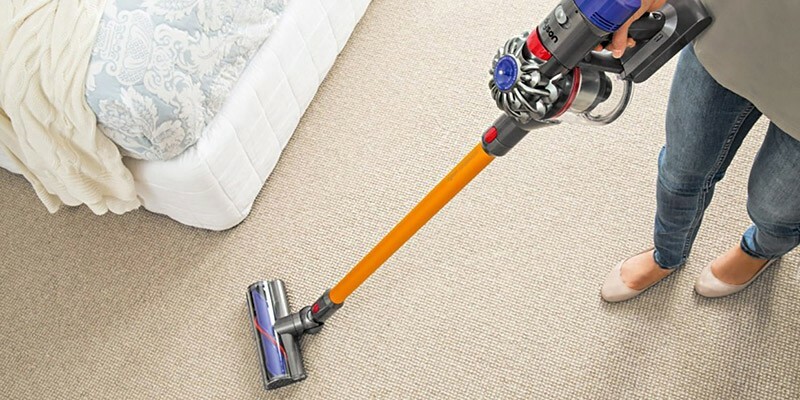Aerated concrete is reliable, cheap and durable. But... all this - subject to certain conditions, one of which is protection from moisture. How to do it competently, and most importantly - how to do it? Which composition is best suited for this purpose? Let's figure it out in order.
Read in the article
- 1 Why aerated concrete walls need to be protected from moisture
- 2 The better to protect aerated concrete blocks from water
- 3 On the use of liquid glass for gas blocks
- 4 Does the water repellent interfere with the plastering of the walls?
Why aerated concrete walls need to be protected from moisture
The vapor permeability of aerated concrete is one of its advantages and at the same time a disadvantage. The hygroscopicity of this building material is known: aerated concrete absorbs water, and if the block is immersed in liquid, it absorbs moisture twice its own weight. Thus, aerated concrete blocks are like a sponge, and in the first year after construction, this absorption process works especially actively, which can lead to unpleasant consequences. If you hit the moistened aerated concrete with frost, the water will simply rupture the cells, and the blocks will begin to crumble. Most often, this situation occurs at the junction with the foundation, if a ledge was made during the construction process.
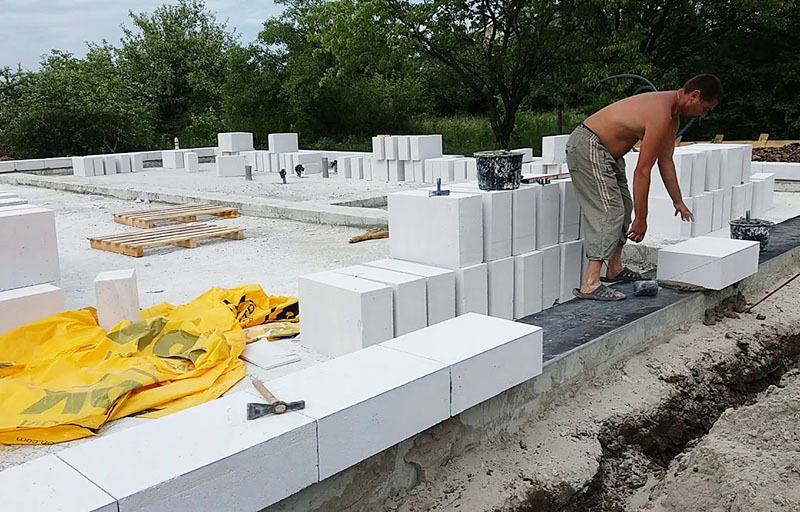
Practice shows that all problems associated with excessive absorbency of blocks disappear a year after construction. But waterlogging should not be allowed, counting on this effect.
If you apply plaster or lay tiles to undried blocks, the moisture will be trapped inside, and the destruction process will not stop after a year, but will continue, gradually leading to the destruction of the walls.
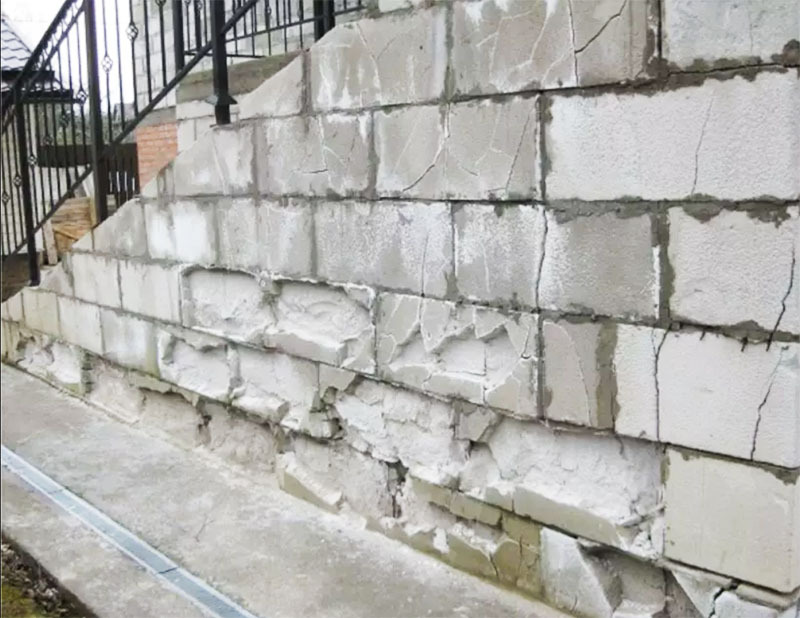
The better to protect aerated concrete blocks from water
Porous aerated concrete must retain its vapor permeability, so materials for moisture protection should be selected taking this feature into account. From inside the room, the best choice would be gypsum plaster - the same vapor permeable. But from the outside, preference should be given to water repellents, that is, liquid compositions that will make the blocks non-wettable. During processing, the composition itself settles on the surface of the cellular structure of concrete, forming the thinnest molecular film.
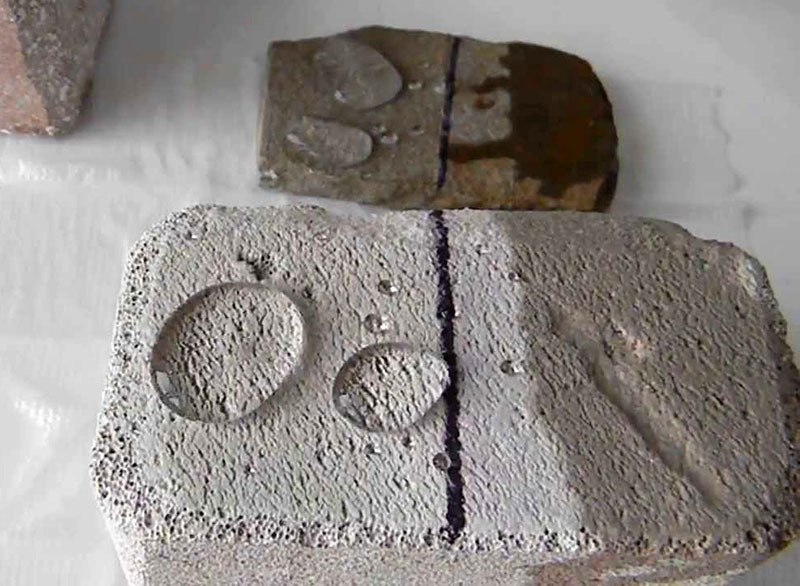
To choose a means for aerated concrete blocks, you need to take into account several nuances. The first is the application time. For late autumn, you need to use a silicone water repellent that can be applied to wet walls. The chemical composition of the product is such that during application, intense evaporation occurs, and the aerated concrete dries quickly and at the same time receives protection.
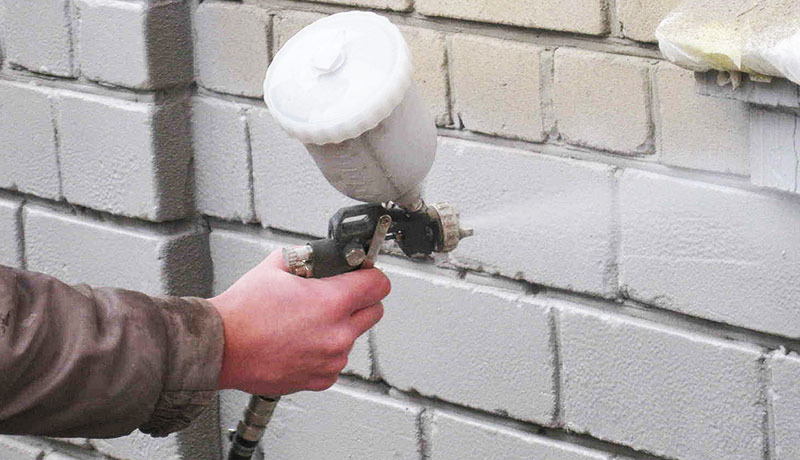
If you apply water repellent on dry walls in a warm season, you can keep within a small budget by using a silicon-containing solution. By the way, the walls treated with this composition do not get dirty, that is, it is not only water-proof, but also mud-proof.
When choosing a product, pay attention to the additional properties of hydrophobes. It is worth choosing those in which antibacterial and antifungal effects are prescribed.
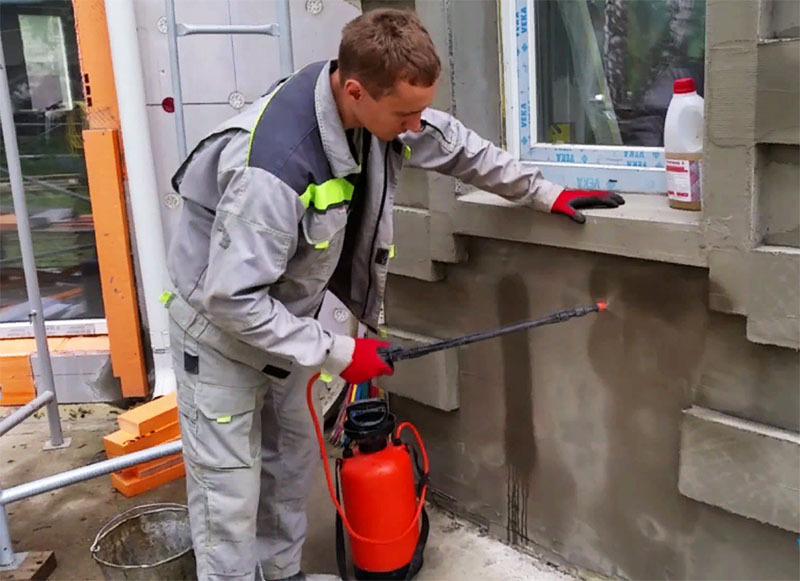
As for the manufacturers, the best are Spanish, Italian and German brands. But the most optimal price-quality ratio can boast only the Russian manufacturers: "Aquasil", "Tiprom", "Penta".
On the use of liquid glass for gas blocks
Is it possible to use liquid glass to protect gas blocks? The question is logical, because this silicate composition has excellent waterproofing properties?
In principle, it is possible, but with one significant caveat: liquid glass should be applied only if you are sure that the blocks are completely dry. The wall treated with glue will be waterproof on both sides, so if you lock the moisture inside, you will get the effect of a container with water with all the ensuing consequences.
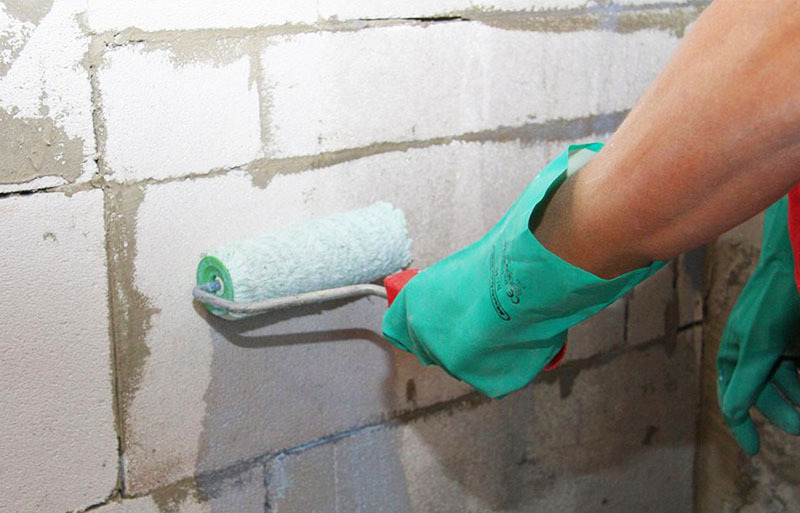
Does the water repellent interfere with the plastering of the walls?
Another question that inevitably arises in the process of protecting gas blocks from moisture: how to plaster them later? Hydrophobization does not interfere with the plastering of the surface, but a primer should be applied before work, then you can be sure that the plaster layer will firmly adhere to the surface.
And a few more practical tips for protecting aerated concrete walls with an experiment on the effect of various impregnations:
What composition did you use? What results did he show? Share your experience in the comments!

